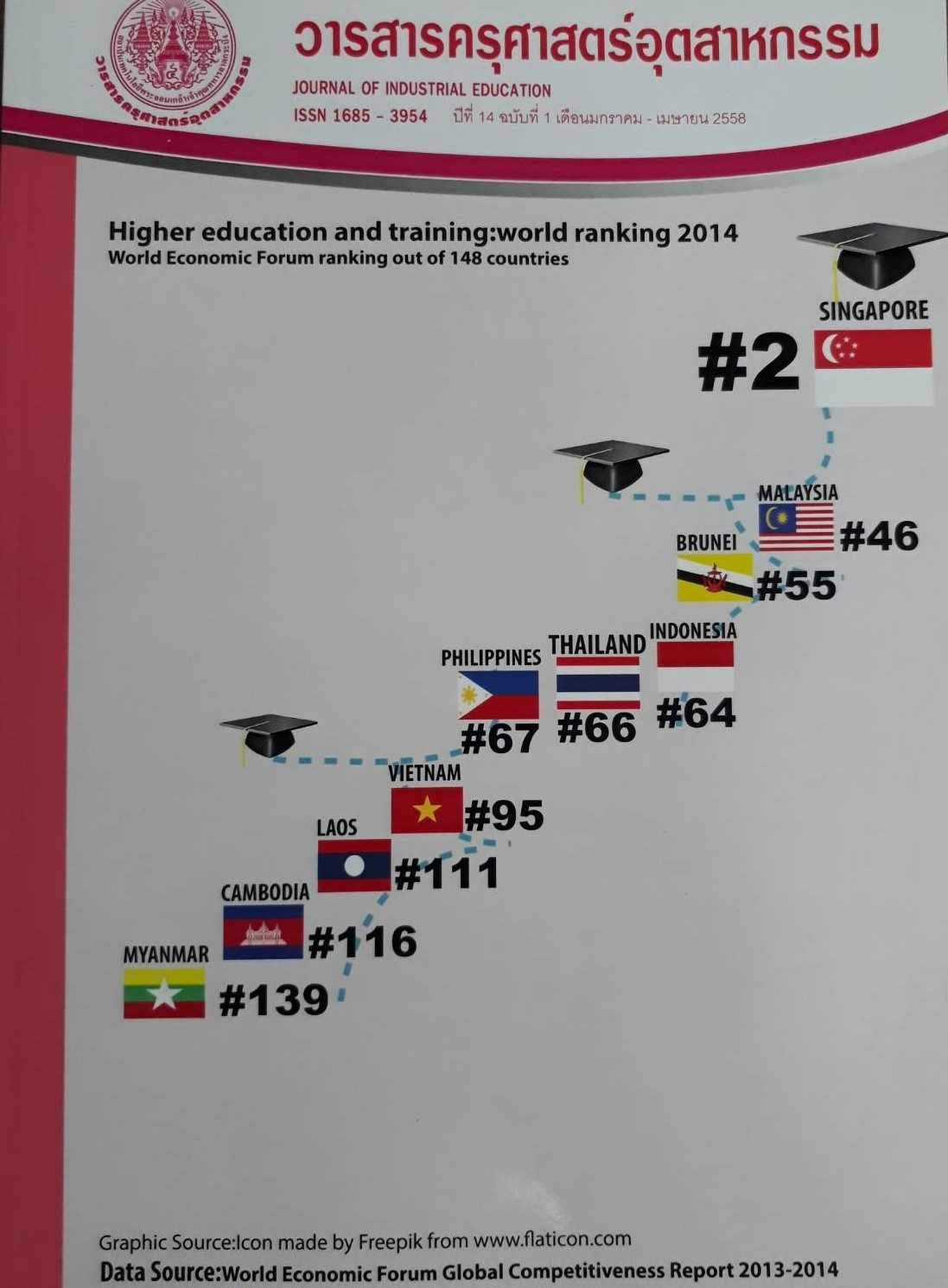Web – Based Instruction on Reamaunre Dance
Keywords:
Reamaunre Dance, web-based instruction, learning achievement, Efficiency testAbstract
The purposes of this research were 1) to design and examine efficiency of a web-based instruction on Reamaunre Dance 2) to study and compare the learning achievement of the subjects learning the lesson through the web-based instruction and the subjects learning through traditional methods.
The samples of this study were 40 students in the first year of their secondary school (Grade 7), in the academic year 2013 from Tessaban 2 Wipatsuksa School, Surin Province, Thailand, chosen by simple random sampling method. The samples of the study were divided into 2 groups of 20, for the experimental group who studied the lesson through the web-based instruction, and the controlled group who studied the lesson through traditional methods.
Efficiency test of the web-based instruction on Reamaunre Dance was conducted by the comparison of the sub-test and post-test scores on 80:80 criterion. In addition the comparison of the learning achievement between the 2 groups was conducted using Independent Sample t-test.
The results of the study were as follows:
1) The web-based instruction on Reamaunre Dance was considered efficient with the efficiency value of 85.88:81.31 in accordance with the required criterion not less than of 80:80.
2) The students in the experimental group who studied the lesson through the web-based instruction presented significantly higher learning achievement than the students in the controlled group who studied the lesson through traditional methods, with the significant value of 0.05.
References
[2] พนิดา บุญทองขาว. 2543. เรือมอันเร. ค้นเมื่อวันที่ 5 ตุลาคม 2556,จาก https://www.tnrr.in.th/rir/index.
[3] ถนอมพร เลาจรัสแสง.2545. E-learning ทางเลือกใหม่ของการศึกษาในยุคเทคโนโลยี สารสนเทศ. กรุงเทพฯ : ม.ป.พ.
[4] กิดานันท์ มลิทอง. 2543. เทคโนโลยีการศึกษา และ นวัตกรรม. กรุงเทพฯ: อนุการ.
[5] Ritchie & Hoffman. 2001. An instructional design-based approach for developing onlinelearning environments. In Kahn, B. (Ed.), Web-based training. Englewood Cliffs, NJ: EducationalTechnologyPublications, from https://edweb.sdsu.edu/people/rhoffman/download/HoffmanCVLite.pdf
[6] บุญชม ศรีสะอาด 2545. วิธีการสร้างสถิติ สำหรับการวิจัย. พิมพ์ครั้งที่ 6 กรุงเทพฯ: สุวีริยาสาส์น.
[7] ชัยยงค์ พรหมวงศ์ และคณะ. 2542. ระบบสื่อสาร การสอน. กรุงเทพฯ: จุฬาลงกรณ์มหาวิทยาลัย.
[8] ล้วน สายยศ และอังคณา สายยศ. 2538. สถิติวิทยาทางการวิจัย. กรุงเทพฯ: สุวีริยาสาส์น.
[9] ขนิษฐา สิทธิเทียมจันทร์.2555.พัฒนาบทเรียนผ่าน เครือข่ายอินเทอร์เน็ตเพื่อการทบทวน เรื่อง เคเบิ้ล โมเด็มเบื้องต้น.วารสารครุศาสตร์อุตสาหกรรม, 11(3), น.33-39
[10] ศิริลักษณ์ เพ็ชรมงคล. 2551. บทเรียนบนเครือข่าย อินเทอร์เน็ตเรื่อง การจัดองค์ประกอบศิลป์. วิทยานิพนธ์ปริญญาครุศาสตร์อุตสาหกรรมมหาบัณฑิต สาขาวิชาเทคโนโลยีการศึกษาทางการอาชีวะและเทคนิค ศึกษา บัณฑิตวิทยาลัย สถาบันเทคโนโลยีพระจอมเกล้า เจ้าคุณทหารลาดกระบัง.
[11] ศุภภาพร แพทยังกุล. 2551. บทเรียนบนเครือข่ายอินเทอร์เน็ต เรื่องวัดสำคัญเชิงประวัติศาสตร์ของ กรุงเทพมหานคร. วิทยานิพนธ์ปริญญาครุศาสตร์ อุตสาหกรรมมหาบัณฑิต สาขาวิชาเทคโนโลยีการศึกษา ทางการอาชีวะและเทคนิคศึกษา บัณฑิตวิทยาลัย สถาบันเทคโนโลยีพระจอมเกล้าเจ้าคุณทหารลาดกระบัง.
Downloads
Published
How to Cite
Issue
Section
License
"The opinions and contents including the words in papers are responsibility by the authors."
"ข้อคิดเห็น เนื้อหา รวมทั้งการใช้ภาษาในบทความถือเป็นความรับผิดชอบของผู้เขียน"



